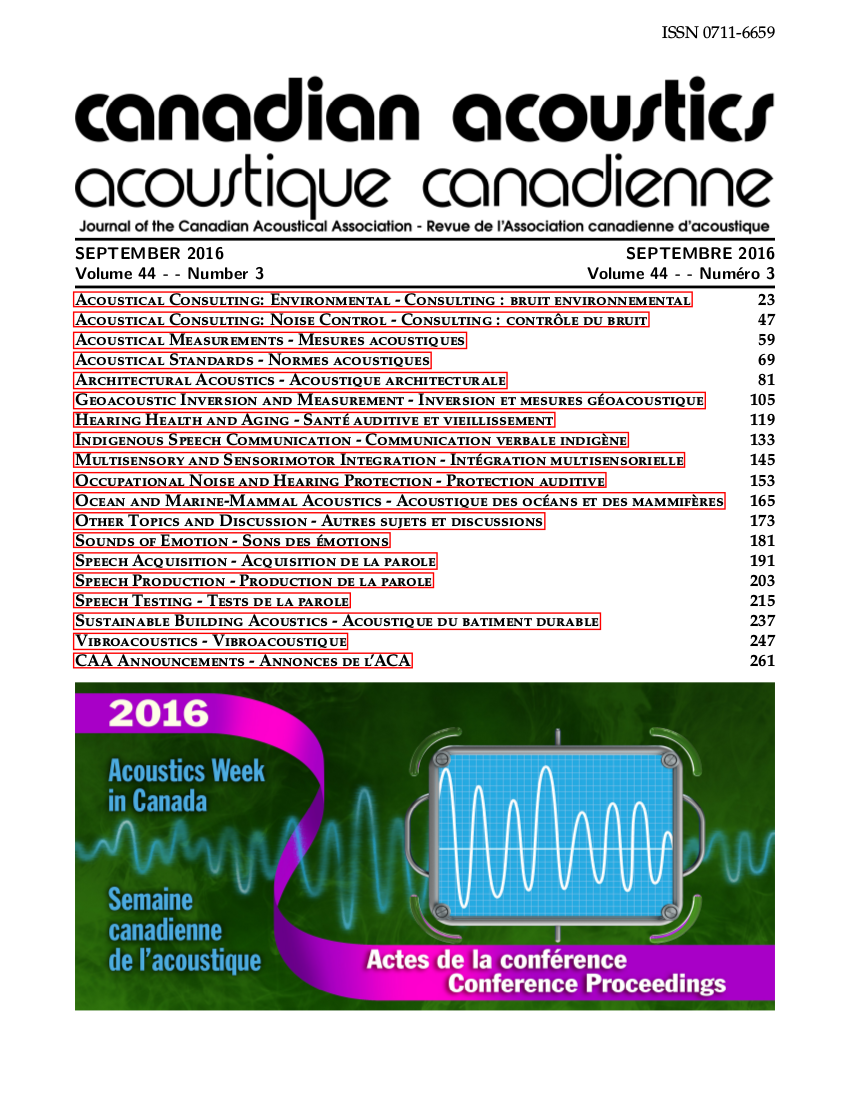Colt C8A2 Carbine Impulsive Noise Auditory Hazard Assessment through Testing In a Reverberant Environment
Abstract
Exposure to high levels of gunfire impulsive noise is potentially hazardous to human hearing and may lead to permanent auditory as well as non-auditory damage in the unprotected ear. Correctional Service Canada (CSC) approached NRC Aerospace to address a concern for potential hearing damage from discharging of firearms within enclosed spaces such as armoured control posts.
In order to address this concern, a reconfigurable control post was built by NRC on a shooting range and this test setup used to measure the impulsive noise time trace waveforms. The measured waveforms were analyzed in accordance with the updated standard procedure MIL-STD-1474E (revision 15 April 2015) using the algorithm suggested by the standard: Auditory Hazard Assessment Algorithm for Humans (AHAAH). This algorithm enabled the assessment of the auditory hazard risk to which personnel would be exposed during a Colt C8A2 carbine discharge. Three different geometry and floor area control post configurations were considered. Moreover two different control post window configurations where considered, namely: a) armored window with a narrow slit gun port opening surrounded by ballistic glass and b) wide open large window.
The paper presents the results and conclusions of the data analysis of the testing campaign aimed at evaluating the noise exposure and assessing the auditory hazard of personnel using the Colt C8A2 carbine.
Additional Files
Published
How to Cite
Issue
Section
License
Author Licensing Addendum
This Licensing Addendum ("Addendum") is entered into between the undersigned Author(s) and Canadian Acoustics journal published by the Canadian Acoustical Association (hereinafter referred to as the "Publisher"). The Author(s) and the Publisher agree as follows:
-
Retained Rights: The Author(s) retain(s) the following rights:
- The right to reproduce, distribute, and publicly display the Work on the Author's personal website or the website of the Author's institution.
- The right to use the Work in the Author's teaching activities and presentations.
- The right to include the Work in a compilation for the Author's personal use, not for sale.
-
Grant of License: The Author(s) grant(s) to the Publisher a worldwide exclusive license to publish, reproduce, distribute, and display the Work in Canadian Acoustics and any other formats and media deemed appropriate by the Publisher.
-
Attribution: The Publisher agrees to include proper attribution to the Author(s) in all publications and reproductions of the Work.
-
No Conflict: This Addendum is intended to be in harmony with, and not in conflict with, the terms and conditions of the original agreement entered into between the Author(s) and the Publisher.
-
Copyright Clause: Copyright on articles is held by the Author(s). The corresponding Author has the right to grant on behalf of all Authors and does grant on behalf of all Authors, a worldwide exclusive license to the Publisher and its licensees in perpetuity, in all forms, formats, and media (whether known now or created in the future), including but not limited to the rights to publish, reproduce, distribute, display, store, translate, create adaptations, reprints, include within collections, and create summaries, extracts, and/or abstracts of the Contribution.


